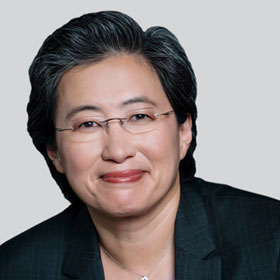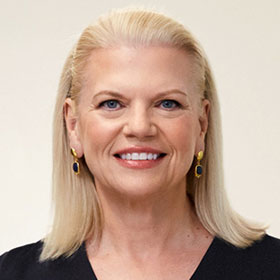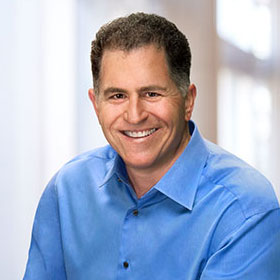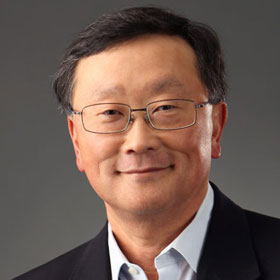Israeli
startups are greasing the wheels of the Fourth Industrial Revolution
How did a tiny country
without a significant manufacturing sector become so important to the Fourth
Industrial Revolution – and how will that help us all?
Close to 1,000 people
are converging on Tel Aviv for Israel Industry 4.0 Week starting February 24. And exactly why should
you care?
Because even if you
never set foot in a factory or power plant, what happens there affects you.
Call it the Fourth
Industrial Revolution or simply I4, Industry 4.0 is greasing the wheels of a
shift from “far and cheap” to “local and smart” manufacturing anywhere.
While the Third
Industrial Revolution introduced technologies such as robotics, 4.0 innovations
digitize, simplify, connect, safeguard and generally improve every step of
production.
The benefits of I4
technology are many: more jobs, higher productivity, better oversight and
quality, less pollution and faster delivery — without costing you more.
Incredibly, Israel earns
a big piece of the $90 billion I4 market pie. This tiny country in the Middle
East ranks third in I4 venture investments (after the US and China) and second
in early-stage investments.
“Israel, as an
innovative ecosystem well connected to global tech challenges and needs, has
become a strong player in Industry 4.0, with increased attention from global
players,” according to a report from Start-Up Nation Central, which is sponsoring
Industry 4.0 Week with Grove Ventures and Deloitte.
Israeli I4-related
startups number about 260. That’s nearly 70% more than in 2014, report author
Yuval Engelstein tells ISRAEL21c. And the number of investors in this sector
has more than doubled to 104 in five years.
“We’ve hosted dozens of
multinationals from diverse industries including chemicals, materials science,
fashion, food and beverages, retail, and energy that expressed interest in
Israeli Industry 4.0 solutions,” said Engelstein, Start-Up Nation Central’s
Industry 4.0 and smart mobility lead analyst.
People, machines, logistics
I4 is not about
replacing people with machines. It’s about enhancing how both do their jobs.
“Manufacturing is
physical — a combination of people and machines and logistics,” says Natan
Linder, the Israeli CEO of Boston-based Tulip.
“Until now, new
technology has been focused on automation. But it was not taking humans along
for the ride.”
Employees in sectors
such as sales and finance have many apps and software tools to assist them
(think Monday or SalesForce). Tulip brings that ability to factory managers
with a no-coding system they can use on the spot to build apps for improving
production-line workflow.
“You have to get to the
point where software is driving manufacturing,” says Linder. “In an age of
customization and immediacy, it’s a complex problem to build things on time and
well.”
The World Economic
Forum’s Centre for the Fourth Industrial Revolution (C4IR) recently welcomed
Israel as a partner in shaping the trajectory of the Fourth Industrial
Revolution.
“As the ‘Start-Up
Nation,’ Israel has already proven itself as a global leader in technology
innovation. Now, as part of the C4IR network, it will extend this leadership to
the global governance of key emerging technologies such as artificial
intelligence, autonomous vehicles and precision medicine,” said Murat Sönmez,
head of C4IR.
9 Industry 4.0 subsectors
The Start-Up Nation
Central report divides the Israeli I4 landscape into nine categories:
operations optimization, cybersecurity, sensing and imaging, inspection and
testing, IoT platforms and connectivity, additive (3D printing) manufacturing,
supply chain, robotics and maintenance.
Operations optimization
is the largest I4 subsector in Israel. About 60 companies are innovating
technologies to increase yield, decrease the consumption of raw materials or
energy, and enable a faster time to market.
One example is Grid4C, whose
plug-and-play AI software analyzes billions of meter readings at the grid edge
to deliver millions of daily predictions for energy providers, their customers
and the utility grid.
Seebo created an AI
software solution to analyze production-line sensor data and offer suggestions
for process optimization.
It originally developed
advanced sensors for video-game controllers. Pivoting to I4 was a wise move:
Among Seebo’s clients are P&G, ChemChina and Nestlé.
Preventing cyberattacks and
machinery malfunctions
The second largest
subsector is industrial cybersecurity.
Some 34 startups in this
area “frequently serve as an entry point into Industry 4.0 for manufacturers as
they try to protect their data and connected systems from hackers,” according
to the report.
Industrial cybersecurity
firms that raised the most funding between 2014 and 2018 are Claroty, Armis, ThetaRay, CyberX and Radiflow.
Tel Aviv-based Radiflow
and the Fraunhofer Institute of Optronics, System Technologies and Image
Exploitation in Germany are developing machine-learning and
artificial-intelligence techniques to determine whether abnormal behavior on
industrial automation networks indicates a cyberattack.
Start-Up Nation Central
counts 16 Israeli companies that forecast or find machinery glitches that could
damage the machines, the products — and ultimately, sales.
Examples include: 3DSignals, which monitors
industrial machines using acoustics; Augury, which uses the
Internet of Things and artificial intelligence to predict machinery faults for
clients including Hershey and Heineken; and Iguazio, which uses sensors,
data analysis and AI to detect signals of impending equipment malfunctions in
real time.
VocalZoom recently launched
groundbreaking “Autonomous Sensors” that use contactless, vibration-based
sensor technology with built-in data processing to monitor the health of any
industrial equipment — whether hot, wet, small, moving or rotating.
Rising investment in Israeli I4
R&D
Because I4 doesn’t lend
itself to one-size-fit-all solutions, Engelstein doesn’t predict lucrative
exits in the I4 sector like we’ve seen in auto-tech — such as Intel’s $15.3 billion buyout of Jerusalem-based
Mobileye.
As Tulip’s Linder puts
it, “There is no Microsoft or Google in this space, and I don’t think there
ever will be because manufacturing is so big and varied.”
Nevertheless, investment
in Israeli I4 startups jumped from $413 million in 2018 to $650 million in
2019.
That figure includes two
“mega rounds” — $110 million for Fabric and $109 million
for Vayyar.
Fabric (formerly
CommonSense Robotics) tailors technologies that allow automated
micro-fulfillment centers to be embedded in cities, closer to customers.
Vayyar’s 4D radar
imaging sensors see through walls and objects to track and map everything
happening in an environment in real time, without cameras or privacy concerns.
One of many Vayyar use
cases is helping robots detect where people are in the factory, to avoid safety
incidents and reduce machine down-time.
Industry 4.0 incubators opening
across Israel
Israel’s first Industry
4.0 incubator, Let-Lab, opened in 2018 in Nazareth Illit under license of the Israel
Innovation Authority (IIA). It’s run by the Ham-Let Group, a Tel Aviv-based
global manufacturer of valves, fittings and hoses.
Less than two years
later, Israel now has eight Industry 4.0 accelerators and incubators, plus
three I4 entrepreneurship programs.
Some are run in
cooperation with foreign companies. InfraLab in Haifa is
operated by Italian energy company Enel and Israeli infrastructure giant Shikun
& Binui. PMatX in Yavneh is a collaboration between Germany-based Merck
pharmaceutical company and US-based semiconductor maker Flex.
The IIA is soon opening
the I4 Valley incubator in Carmiel with local corporate partners Wipro Givon,
Kusto (Tambour), Keter Plastic, Trellidoor, Flying Cargo and Klil.
The IIA’s parent body,
the Ministry of Economy, is setting up an Institute for Advanced Manufacturing
to focus on robotics, digitization and IoT; and a Center for Resource
Efficiency focused on optimizing production of energy, raw materials and water.
Israeli startups also
benefit from the R&D centers, corporate venture arms and open innovation
platforms established in Israel by about 50 global companies in the Industry
4.0 sector.
Updating kibbutz industries
Israeli I4 technologies
are meant primarily for foreign businesses because Israel has only 22,000
registered factories.
However, Engelstein says
local I4 startups and factories really need each other.
“Israeli manufacturers
can benefit from the most advanced Industry 4.0 technologies, tailor-made to
their specific needs, cost-effective, faster and more agile. On the other hand,
Israeli Industry 4.0 startups can benefit from simpler testing for their
products, the experience of working in a real factory, easier access to
external funding at an early stage and the chance to start earning.”
A case in point is a
collaboration announced earlier this month between Seebo (see above) and the
dairy division of Israeli food group Tnuva.
Another place this is
happening is on the kibbutz.
In the old days,
kibbutzim were agricultural communes. Today, 250 of Israel’s 270 kibbutzim earn
income from manufacturing.
“These are mostly
traditional industries producing plastic, rubber, metal, fertilizer or food,”
says Rafi Nevo, head of innovation and entrepreneurship for the Kibbutz Industries Association.
Sales from kibbutz
factories in the past year reached a record high of $13.6 billion. To continue
that growth, they need smart technologies to keep production onshore, modernize
processes and increase output.
“We are helping them get
to know and implement Industry 4.0 advancements,” Nevo tells ISRAEL21c.
Sensors, artificial
intelligence, augmented reality, business intelligence, computer vision, data
collection and analysis, and even collaborative robots (“cobots”) are starting
to help kibbutz industries reach greater overall productivity.
A countrywide phenomenon
Engelstein says Start-Up
Nation Central will soon host a roundtable event in Jerusalem for Israeli
manufacturers and representatives from the Ministry of Economy and IIA. “We’ll
try to learn how to connect better between Israeli industry and startups.”
Start-Up Nation Central
established an Israel Industry 4.0 Community in 2018. II4 facilitates online and offline
business opportunities and strategic alliances among local innovators and
global financers and industry leaders.
Unlike some high-tech
ecosystems clustered in the Tel Aviv area, I4 startups are spread across
Israel. It’s therefore a sector that drives employment for diverse populations.
In the southern city of
Beersheva, Siraj Technologies specializes in Industrial Internet of
Things connectivity solutions and is headed by Arab co-CEOs.
Other examples are Hoopo on Kibbutz Glil
Yam near Herzliya (supply chain); Cybord on the religious moshav Bnei Re’em in
south-central Israel (inspection and testing); Ayyeka in Jerusalem
(operation optimization); EZMems in
Netanya (sensing and imaging); and XJet in Rehovot (additive manufacturing).
The Start-Up Nation
Central report points out that many of the entrepreneurs starting these
companies gained experience in sensors, image and video processing, big data,
algorithms and real-time analytics technologies during their military service.
“This knowledge is
utilized later to either start or seek employment in companies which utilize
non-military applications of the technologies. Industry 4.0 is one of the more
attractive sectors to exploit this experience,” says Engelstein.
Israel Industry 4.0 Week
will give them a platform to create greater awareness among Israeli and
overseas investors and multinationals “that Israel is a powerhouse in 4.0 and
if they’re searching for technology to improve manufacturing they need to come
to Israel,” he concludes.
By Abigail Klein Leichman















